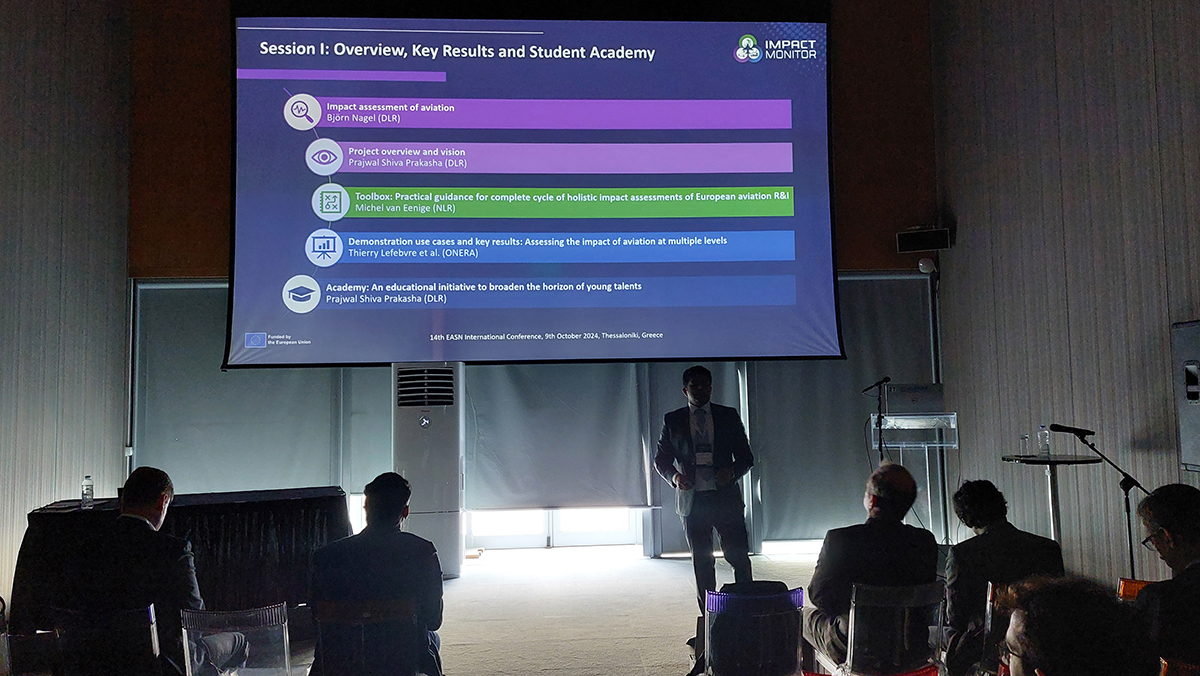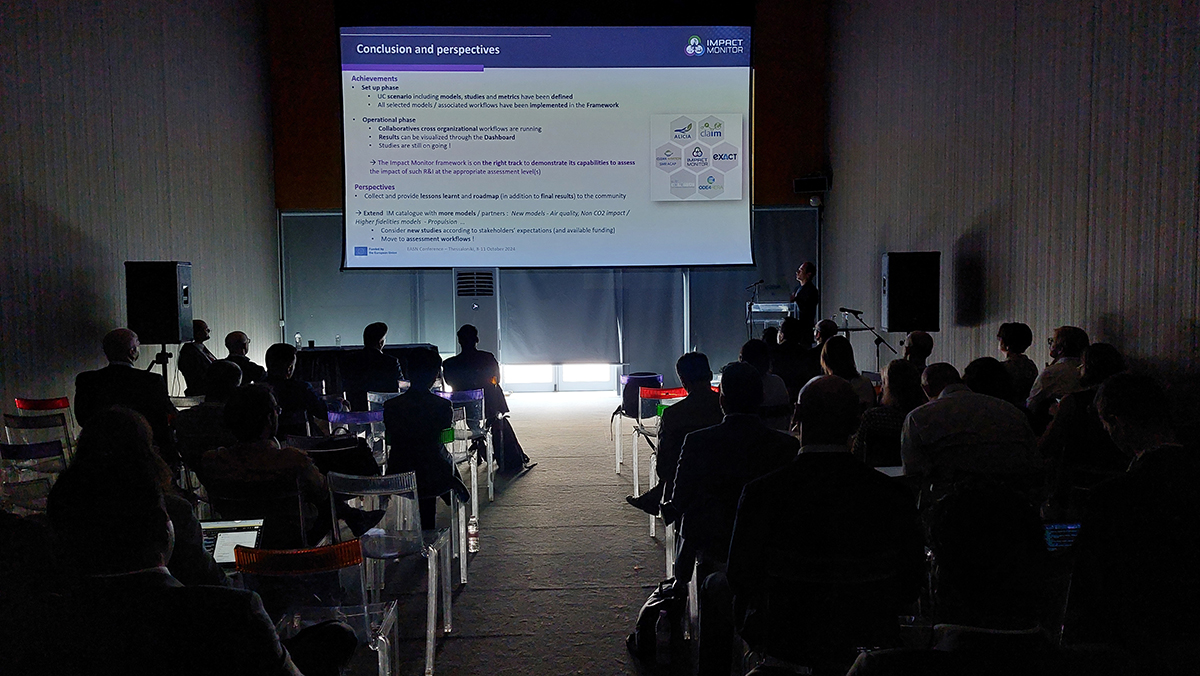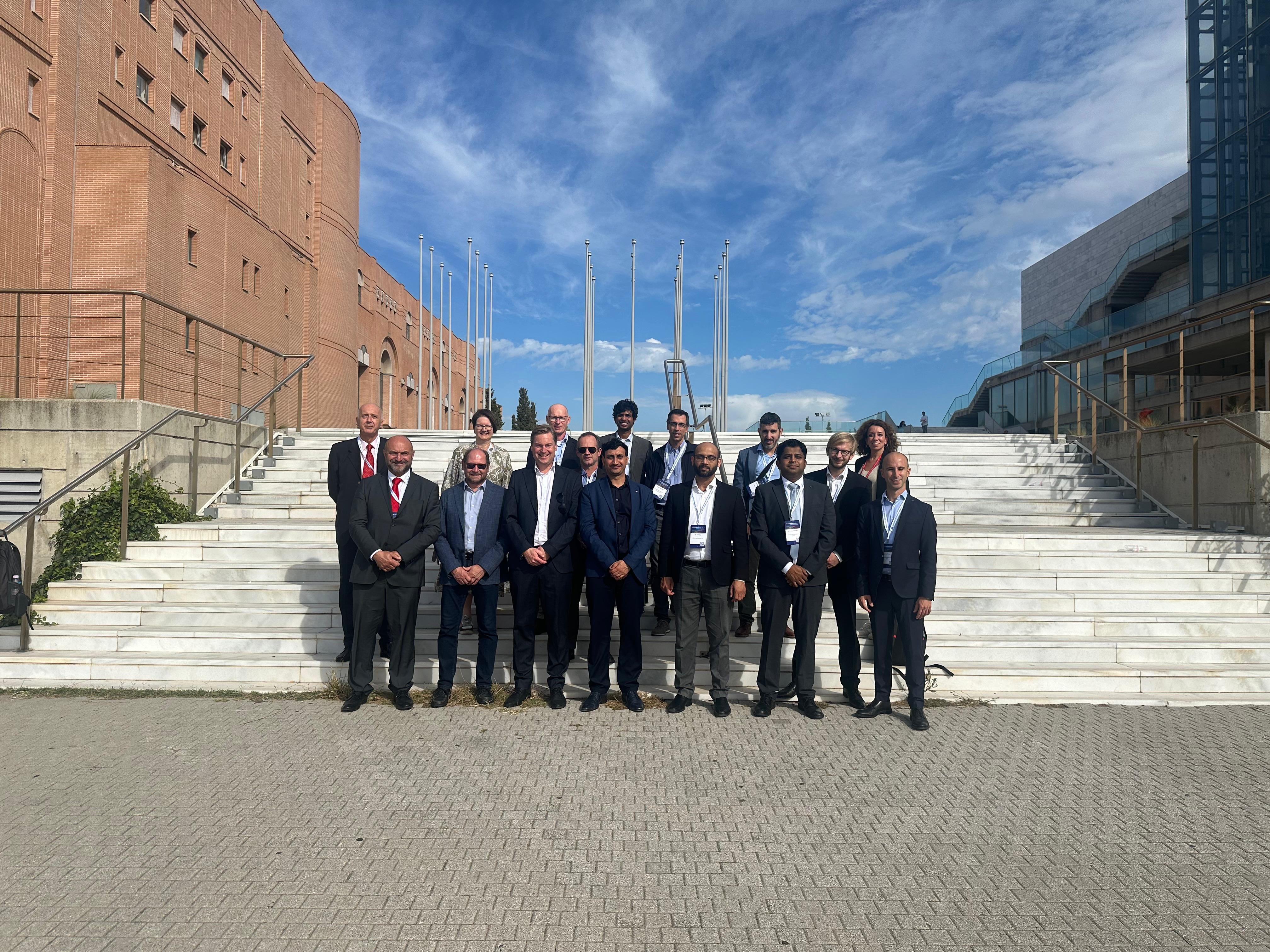We are thrilled to announce that the IMPACT MONITOR Project played a significant role at this year’s 14th EASN Conference, held in Thessaloniki from 8 to 11 October, 2024. The conference served as a vital platform for researchers, industry leaders, and policymakers to share their latest advancements in the aeronautics sector. IMPACT MONITOR contributed to the dialogue with two dedicated sessions that showcased our innovative approaches to impact assessment in aviation research and development. These sessions offered attendees valuable insights into the project's methodologies and highlighted the initial results of our demonstration activities.
1. Overview, Key Results, and Student Academy Session
Led by key partners from DLR, NLR, and ONERA, this session provided an in-depth overview of the IMPACT MONITOR project. The discussion centered on the project’s objectives and how it is supporting researchers, stakeholders, and decision-makers by offering enhanced tools for impact measurement. A key highlight was the involvement of the Student Academy, which plays a crucial role in engaging and mentoring young researchers, thereby ensuring future advancements in aeronautics.
- Impact assessment of aviation (Keynote presentation - DLR)
- Impact Monitor Project: Overview and vision (DLR)
- Impact Monitor Toolbox: Practical guidance for complete cycle of holistic impact assessments of European aviation R&I (NLR)
- Impact Monitor Demonstration Use Cases and Key Results: Assessing the impact of aviation at multiple levels (ONERA)
- Impact Monitor Academy: An educational initiative to broaden the horizon of young talents (DLR)
2. Technical Details & Demonstration Results
The second session took a more technical turn, featuring presentations from DLR, Cranfield University, Universitat Politècnica de Catalunya, and Transport & Mobility Leuven. This session provided a detailed look at the methodologies and tools developed by the project, including the technical aspects of impact monitoring in the aviation sector. Live demonstrations of the project’s initial results offered a practical glimpse into how these tools can assess the environmental and societal impact of aviation research, helping to meet the EU’s ambitious sustainability goals.
- Impact Monitor Technical Development: Overview and approach (DLR)
- Impact Monitor Framework: Development and implementation of a collaborative framework for aviation impact assessment (DLR)
- Assessing advanced propulsion systems using the Impact Monitor Framework (Cranfield University)
- Assessing continuous descent operations using the Impact Monitor Framework (Universitat Politècnica de Catalunya)
- Assessing policies for the uptake of sustainable aviation fuels using the Impact Monitor Framework (Transport & Mobility Leuven)


Both sessions were expertly moderated by Mr. Hugues FELIX from CINEA (European Climate, Infrastructure, and Environment Executive Agency), who guided the discussions toward actionable insights and takeaways for all attendees.
Complementary Presentations
In addition to the main sessions, IMPACT MONITOR also featured two other important presentations that complemented the project’s themes:
Oral Presentation: “A pre-processing methodology for the identification of relevant and innovative R&I initiatives and Stakeholders’ needs in the aviation domain supporting the Impact Monitor Project”, by CIRA. This presentation provided an overview of how the project identifies key research and innovation initiatives and stakeholder needs to ensure the aviation sector’s impact assessment is robust and relevant.
Poster Presentation: “Iterative Aircraft and Engine Sizing Using SUAVE and TurboMatch in Remote Component Environment (RCE)”, by the University of Stuttgart. This presentation showcased a methodology for aircraft and engine sizing, contributing valuable insights into the project’s technical assessment capabilities.
Key Takeaways and Looking Ahead
The IMPACT MONITOR sessions provided attendees with a clear understanding of how the project is pushing the boundaries of research impact assessment in aviation. The tools and methodologies demonstrated are paving the way for more informed decision-making, ensuring that research outcomes not only advance the aviation sector but also contribute to broader societal and environmental goals.
We are excited to continue the conversation, collaborating with partners and stakeholders as the IMPACT MONITOR Project progresses. Stay tuned for more updates as we move forward in shaping a sustainable and impactful future for aviation!

